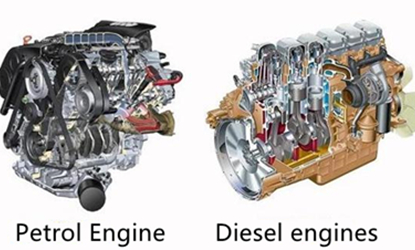Vehicle experts must know ---the difference between Gasoline Vehicles and Diesel Vehicles
2021-03-04
Gasoline vehicles and diesel vehicles use different fuels, their engine structure, mixture formation method and combustion method are different, and their pollutant emission rules are also different. It is manifested in the following aspects:
(1) Gasoline is highly volatile, while diesel is difficult to evaporate. Therefore, gasoline vehicle pollutants have fuel evaporative emissions, and their components are hydrocarbons (HC).
(2) Gasoline has the characteristics of being easy to mix with air and not easy to separate after mixing. The fuel mixture of gasoline vehicles is formed outside the combustion chamber of the engine (in the carburetor and/or intake pipe), and passes through the intake and compression process before being ignited. There is a relatively long mixing time, so gasoline and air It can be mixed very uniformly, and there is basically no local over-concentration or over-thinness and liquid oil droplets. The small molecules of gasoline determine that there are fewer particulates in gasoline vehicle emissions.
The ratio of air to gasoline entering the combustion chamber of the engine is basically controlled near the theoretical air-fuel ratio (the so-called theoretical air-fuel ratio refers to the amount of air required to burn 1 kg of fuel in theoretical calculations, usually around 14.7 for gasoline). The spark plug discharges ignition and combustion, and the combustion speed is very fast; the compression ratio of gasoline engine is low, the maximum combustion pressure is low, and the maximum temperature is high. After combustion, the product has a serious tendency to dissociate at high temperature. Some dead spots do not ignite or break under certain working conditions. Fire causes more carbon monoxide (CO) and hydrocarbons (HC) in gasoline engine emissions.
At the same time, there is a high temperature in the combustion chamber of the engine, which in turn leads to the emission of nitrogen oxides (NOx). Therefore, gasoline vehicle emissions are characterized by high carbon monoxide (CO) and hydrocarbon (HC) emissions, while low particulate matter emissions, and nitrogen oxide (NOx) emissions are basically the same as diesel vehicles.
(3) The formation of diesel fuel mixture is carried out in the combustion chamber of the engine. Diesel fuel is injected into the combustion chamber at high pressure, and after compression and ignition, the diffusion combustion method is carried out while spraying and burning. This way of working determines that the mixture of diesel and air is not uniform, and there is inevitably local hypoxia or local oxygen enrichment.
When the oil is in high temperature and lack of oxygen, it is easy to be carbonized to form soot. The adjustment of diesel vehicle load is controlled by changing the fuel injection volume.
The mixture of diesel vehicles is always in a relatively lean state, which means that there is always surplus air in the combustion chamber of the diesel engine. The surplus air is prone to produce nitrogen oxides (NOx) under the action of high temperature, while carbon monoxide (CO) and hydrocarbons (HC) are not easily formed. Therefore, diesel vehicles are characterized by high emissions of particulate matter and nitrogen oxides (NOx) and low emissions of carbon monoxide (CO) and hydrocarbons (HC).
In addition, some odorous organic gases are generated after the diesel is burned. Therefore, there is still odor in diesel engine emissions.
Tarzan,your trust worthy auto parts supplier,welcome to contact us for your auto parts.
Share:




